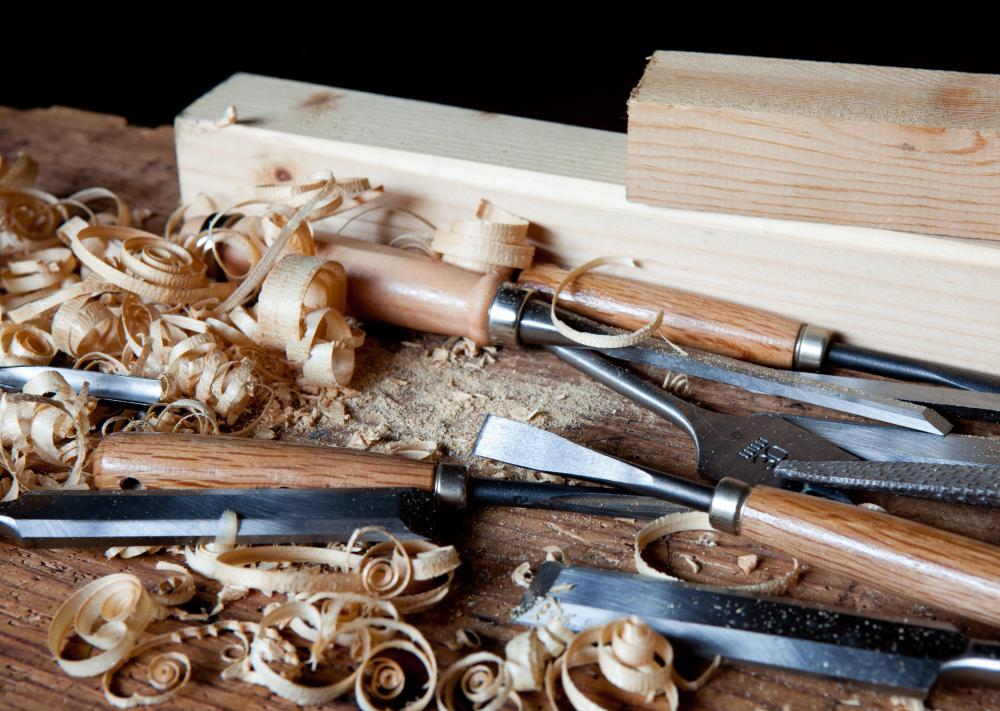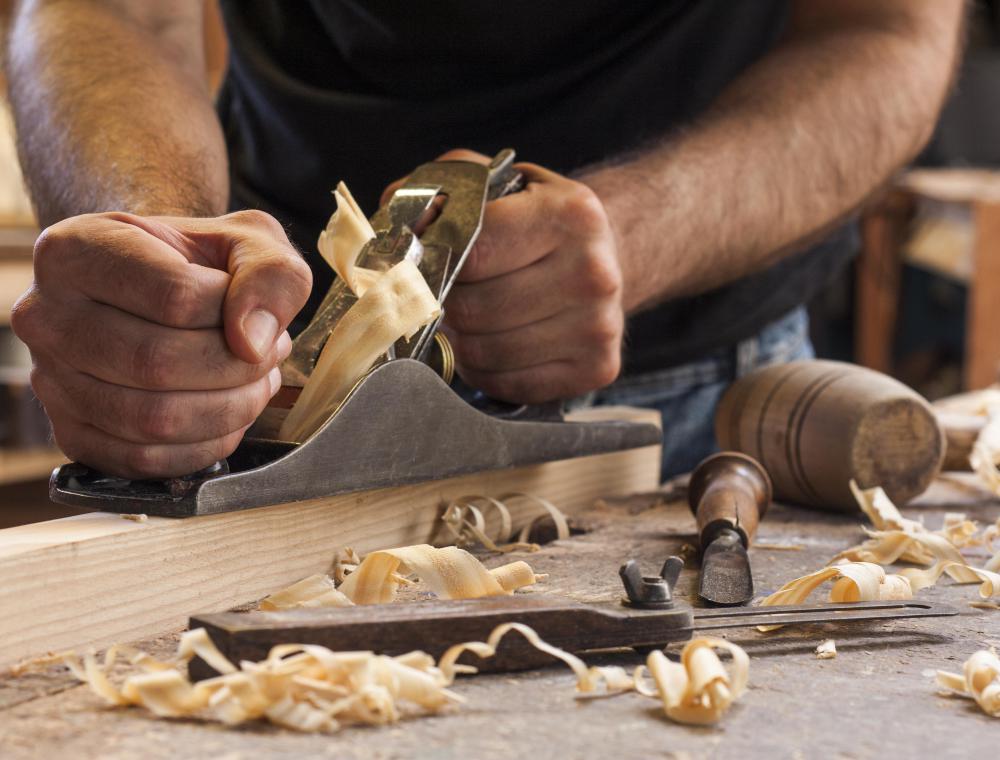At WiseGEEK, we're committed to delivering accurate, trustworthy information. Our expert-authored content is rigorously fact-checked and sourced from credible authorities. Discover how we uphold the highest standards in providing you with reliable knowledge.
What Are the Different Types of Antique Woodworking Tools?
Before power tools became the norm in woodworking shops, all woodworking was done by hand using simpler tools that required skill and strength to use properly. The plane tends to be emblematic of all antique woodworking tools, as it was a very commonly used tool that was used to create flat, even surfaces on a piece of wood. Other antique woodworking tools include chisels, hammers, mallets, saws, punches and awls, hand drills, knives, files, rasps, and floats. Powered lumber mills can, in some cases, be considered antique tools as well.
Knives and blades are perhaps the earliest antique woodworking tools. The shape of the blades could vary significantly to accomplish a variety of different cuts, and handles were affixed in different locations to allow for greater stability during wood shaping. Blades were generally long and straight for bulkier cuts, and they could be rounded or curved for more intricate cuts or finer woodworking. Smaller blades were generally better for intricate work, while longer blades tended to be useful for rough cuts and larger projects.

Planes, sometimes known as planers, were antique woodworking tools that were pushed along a length of wood to smooth or flatten the surface. A blade protruded through the body of the plane, and the amount of blade exposed beneath the tool could be adjusted to accommodate cuts of different thicknesses. This tool is still often used in modern woodworking, though powered machines can do the same job in less time, and in many cases more efficiently.

Other antique woodworking tools that are still commonly used include hammers, mallets, and chisels. Chisels are hard metal tools that feature sharp edges of various shapes; a scooped blade can create rounded cuts in a piece of wood, while a flatter blade can create flat cuts and stop cuts. Sometimes the chisels are used in conjunction with a mallet or hammer that is repeatedly struck against the butt of the chisel to propel it forward.

Antique hand drills worked much the same as modern powered hand drills do: a bit was rotated at a high speed to cut holes into a piece of wood. While modern power drills can spin bits at exceptionally high speeds, antique hand drills could not reach such speeds because the bit was turned by hand. The user would turn a C-shaped handle as rapidly as possible to spin the bit; the excess motion could lead to movement of the bit, thereby widening the hole unintentionally, so the woodworker would need a steady hand to drill a good hole.
AS FEATURED ON:
AS FEATURED ON:















Discuss this Article
Post your comments